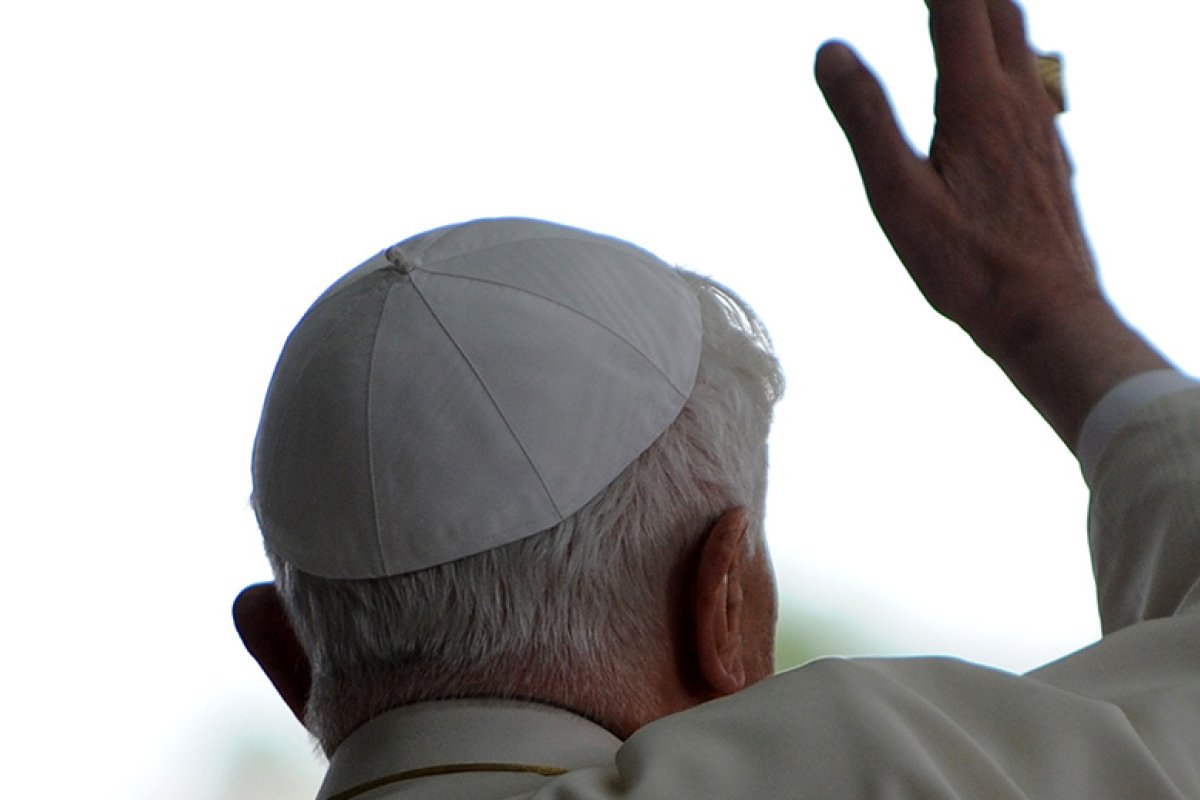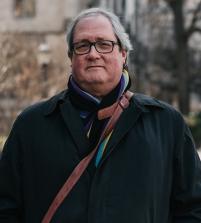
Papal Fallibility
Commentary prompted by the recent death of emeritus Pope Benedict XVI unsurprisingly indexes the usual binaries of sensationalized speculation.
Commentary prompted by the recent death of emeritus Pope Benedict XVI unsurprisingly indexes the usual binaries of sensationalized speculation. There are those who judge that Benedict’s major mistake was his remarkable decision to retire from the papacy, thus handing it over to a successor who has capitulated to modernity and rendered the Church something other than the bulwark against progressivism that it ought to be. Cheek by jowl are those who judge his papacy to be a comprehensive metonymy for the clerical sexual abuse crisis, in which first as Bishop and Cardinal, then as Prefect of the Congregation for the Doctrine of the Faith, and finally as Pope, Benedict failed repeatedly to address proactively the damage done by ordained priests to young people. From another perspective, Benedict is portrayed alternatively as a retiring theologian who reluctantly agreed to an extensive life of administrative service to the Church, or as a revisionist who worked with purposeful proactivity to rein in the excesses of the Second Vatican Council. And on and on, irrespective of the media “outlet” – twittering “rads” and “trads” on the one hand, First Things and National Catholic Reporter on the other.
Let me say, first and foremost, that I truly hope and pray that Benedict rests in peace. My theology, or perhaps more accurately my ecclesiology, differs substantially from his, but I hope I share with him a love for the Church and a wish for its flourishing in the world. Now is not the time to present categorical judgments on a necessarily complicated legacy, and it seems to me inevitably distortive to appropriate Benedict’s death to serve as the flourish for any particular judgment. Mourning can and should be more than that.
Beyond the din of the binaries, there are matters of note that will merit watching in the immediate and intermediate future.
First and perhaps most decisively, Catholicism remains in a state of suspended animation regarding its relation to what it calls “the modern world.” To a degree that distinguished him from both his predecessor and his successor, Benedict was dubious about papal engagement or outreach. So far as I can see, his concern went beyond specific issues like sexuality; it instead indexed what he judged to be an almost reflexive and certainly regrettable distortive influence that modernity exerts upon faith. The Joseph Ratzinger who played a significant role in Vatican II’s promised engagement with modernity became in turn a Cardinal and then a Prefect and finally a Pope who saw the Council as far too accommodating in liturgical practice, in morals, and in theology.
The consequence of this was most decisively articulated in Benedict’s statement early in his papacy that the Church might need to become smaller before it could become larger. While to some degree open to construal, the statement indexed real misgivings about the capacity of the Church to retain its essence via evangelization. In this Benedict differed decisively from John Paul II and from Francis.
Second, the effect of the clerical abuse scandal has not and almost certainly will not diminish with time. Conventional wisdom has it that the anger of faithful Catholics has less to do with the facts of the abuse and more with the failure of bishops and the Curia to deal directly and effectively with it. Whatever the merits of that assessment, the implication that the Church can recover its moral standing through some combination of decisive administrative action and public penance seems increasingly dubious. The damage is enduring, and it is no solution to proceed as if that is not the case.
Third, the capacity of Catholicism to present itself as a globally unified religion is increasingly tenuous. Benedict himself emerged over time as an outlier among his German colleagues; for the American bishops, on the other hand, Benedict clearly remains preferable to his successor. In this respect, Francis’ much noted transformation of the Church’s process of synodal consultation – accentuating heightened Vatican receptivity to local contexts and enhancing levels of reciprocity – may turn out to be the most salient embodiment of the Catholic Church in the twenty-first century.
It is notable that this significant shift in governance takes no explicit stand on whether the Church can or should be larger or smaller; it will instead focus responsively at the national and diocesan levels. Much will depend on Francis’ successor in this regard. It is most likely, however, that Catholicism will look quite different depending on the Church’s national leaders. This is not to say that Rome will ever fully resemble Constantinople – the Pope will never be “first among equals” with the other bishops – but at a functional level, the center of gravity may shift.
In this altered and altering context, Benedict’s resignation remains the striking enigma of his papacy. The questions have to do with intention and with precedent. Was it a matter of conciliation or of resignation? We may never know, but it is striking that there are strong cases to be made for either characterization. (The ambiguity reflects the Church’s indecision about modernity.) Will Benedict’s decision serve to address the striking gerontocracy of the Church’s hierarchy? We will eventually know the answers; but for now, it is striking that Francis continues despite manifest ill health – pleasing the “rads” and vexing the “trads.”
Featured image: "Pope Benedict XVI prays in front of the image of Our Lady of Fatima after arriving to catholic Fatima shrine in central Portugal, May 12, 2010" by Catholic Church (England and Wales) is licensed under CC BY-NC-SA 2.0.


